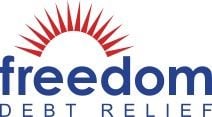Debt Relief: What It Is, How to Choose the Best Option
Debt relief changes the terms or amount of your debt to help you pay it off. Learn about bankruptcy, debt management and other relief options.
Many, or all, of the products featured on this page are from our advertising partners who compensate us when you take certain actions on our website or click to take an action on their website. However, this does not influence our evaluations. Our opinions are our own. Here is a list of our partners and here's how we make money.
Do you feel as if you're just not making progress on your debt, no matter how hard you try? If that's the case, it could be time to consider debt relief.
Debt relief options, such as negotiating directly with creditors, getting on a debt management plan or filing for bankruptcy can help eliminate your debt or make it easier to repay.
What is debt relief?
The term "debt relief" can mean many different things, but the main goal of any debt relief option is usually to change the terms or amount of your debt so you can get back on your feet faster.
Debt relief could involve:
Negotiating with creditors to settle the debt for less than the full amount owed.
Wiping the debt out altogether in bankruptcy.
Using a debt management plan to get changes in your interest rate or payment schedule.
» Dive deeper: Tips and strategies to pay off debt
AD
When should you seek debt relief?
Consider DIY debt relief, bankruptcy or debt management when either of these is true:
You have no hope of repaying unsecured debt (credit cards, medical bills, personal loans) within five years, even if you take extreme measures to cut spending.
The total of your unpaid unsecured debt (excluding student loan debt) equals half or more of your earnings.
» Have college debt? Learn about student loan debt forgiveness programs
What are the debt relief options to consider?
Do-it-yourself debt relief
You can skip an official debt-relief program and handle debt on your own through a combination of stricter budgeting, credit counseling, debt consolidation and appeals to creditors.
For example, you can do what credit counselors do in debt management plans: Contact your creditors, explain why you fell behind and what concessions you need to catch up. Most credit card companies have hardship programs, and they may be willing to lower your interest rates and waive fees.
You can also educate yourself on debt settlement and negotiate an agreement by contacting creditors.
If your debt isn’t too large, standard debt-payoff strategies may be available. For example, depending on your credit score, you may be able to get a 0% balance transfer credit card.
That means moving your debt from a higher-interest credit card to a card with a 0% introductory annual percentage rate, or APR. The interest-free period means your whole payment goes to reducing the balance, making faster progress. Or you may find a debt consolidation loan with a lower interest rate than you're paying now.
Those options won’t hurt your credit; as long as you make the payments by the end of the promotional period, your credit score should rebound. If you go this route, however, it’s important to have a plan to avoid adding more credit card debt.
Debt management plans
A debt management plan allows you to pay your unsecured debts — typically credit cards — in full, but often at a reduced interest rate or with fees waived. You make a single payment each month to a credit counseling agency, which distributes it among your creditors. Credit counselors and credit card companies have agreements in place to help debt management clients.
Your credit card accounts will be closed and, in most cases, you’ll have to live without credit cards until you complete the plan.
Debt management plans do not affect your credit scores, but closing accounts can hurt your scores. Once you’ve completed the plan, you can apply for credit again.
Missing payments can knock you out of the plan, though. And it’s important to pick an agency accredited by the National Foundation for Credit Counseling or the Financial Counseling Association of America.
As always, make sure you understand the fees and what alternatives you may have for dealing with debt.
Debt relief through bankruptcy
There’s little point in entering a debt management plan if you’re not going to be able to pay as agreed. Talk with a bankruptcy attorney first. Initial consultations are often free, and if you don’t qualify, you can move on to other options.
Chapter 7 bankruptcy
The most common form of bankruptcy, Chapter 7 liquidation, can erase most credit card debt, unsecured personal loans and medical debt. It can be done in three or four months if you qualify. What you should know:
It won’t erase child support obligations.
It will hurt your credit scores and stay on your credit report for up to 10 years. However, if your credit is already damaged, a bankruptcy may allow you to rebuild much sooner than if you keep struggling with repayment.
If you have used a co-signer, your bankruptcy filing will make that co-signer solely responsible for the debt.
If debts continue to pile up, you can’t file another Chapter 7 bankruptcy for eight years.
It may not be the right option if you would have to give up property you want to keep. The rules vary by state. Typically, certain kinds of property are exempt from bankruptcy, such as vehicles up to a certain value and part of the equity in your home.
It may not be necessary if you don’t have any income or property a creditor can go after.
Chapter 13 bankruptcy
Not everyone with overwhelming debt qualifies for Chapter 7. If your income is above the median for your state and family size, or you have a home you want to save from foreclosure, you may need to file for Chapter 13 bankruptcy.
Chapter 13 is a three- or five-year court-approved repayment plan, based on your income and debts. If you are able to stick with the plan for its full term, the remaining unsecured debt is discharged.
If you are able to keep up with payments (a majority of people are not), you will get to keep your property. A Chapter 13 bankruptcy stays on your credit report for seven years from the filing date.
» Learn more: When bankruptcy is the best option
Debt settlement: A risky option
Debt settlement is a last resort for those who face overwhelming debt but cannot qualify for bankruptcy or don't want to file bankruptcy.
Debt settlement companies typically ask you to stop making debt payments when you enroll in a settlement plan and instead put the money in an escrow account, the Consumer Financial Protection Bureau says.
Each creditor is approached as the money accumulates in your account and you fall further behind on payments. Fear of getting nothing at all may motivate the creditor to accept a smaller lump-sum offer and agree not to pursue you for the rest.
Why this option is risky
You could end up with debts that are even bigger than when you started as late fees, interest and other charges related to credit card debt balloon.
Not paying your bills can result in collections calls, penalty fees and, potentially, legal action against you. Lawsuits can lead to wage garnishments and property liens. Debt settlement stops none of that while you're still negotiating, and it can take months for the settlement offers to begin.
If your debt is settled, you may also face a bill for taxes on the forgiven amounts (which the IRS counts as income).
The debt settlement business is riddled with bad actors, and the CFPB, the National Consumer Law Center and the Federal Trade Commission caution consumers about it in the strongest possible terms.
Some debt settlement companies also advertise themselves as debt consolidation companies. They are not. Debt consolidation is something you can do on your own, and it will not damage your credit.
Debt relief scams to watch out for
Debt relief may give you the new start you need to make real progress. But be aware that the debt relief industry includes scammers who may try to take what little money you have.
Be sure you understand — and verify — these points before entering any agreement with a debt settlement company:
What you need to qualify.
What fees you will pay.
Which creditors are being paid, and how much. If your debt is in collections, make sure you understand who owns the debt so payments go to the right agency.
The tax implications.
Whether the company you choose works with the creditors you owe.
Avoid debt relief programs that promise to do any of the following:
Make you pay a fee before your debt is settled.
Guarantee a “too good to be true” price for paying off your debt.
Assure you that it can stop all lawsuits and calls from debt collectors.
Debt relief options to avoid
Sometimes overwhelming debt comes with devastating swiftness — a health crisis, unemployment or a natural disaster. Or maybe it came a little at a time, and now creditors and collection agencies are pressing you to pay, and you just can’t.
If you’re feeling overwhelmed by debt, here are some things to avoid if possible:
Don’t neglect a secured debt (like a car payment) in order to pay an unsecured one (like a hospital bill or credit card). You could lose the collateral that secures that debt, in this case your car.
Don't borrow against the equity in your home. You’re putting your home at risk of foreclosure and you may be turning unsecured debt that could be wiped out in bankruptcy into secured debt that can’t.
Think twice about borrowing money from workplace retirement accounts if possible. If you lose your job, the loans can become inadvertent withdrawals and trigger a tax bill.
Don’t make decisions based on which collectors are pressuring you the most. Instead, take time to research your options and choose the best one for your situation.




